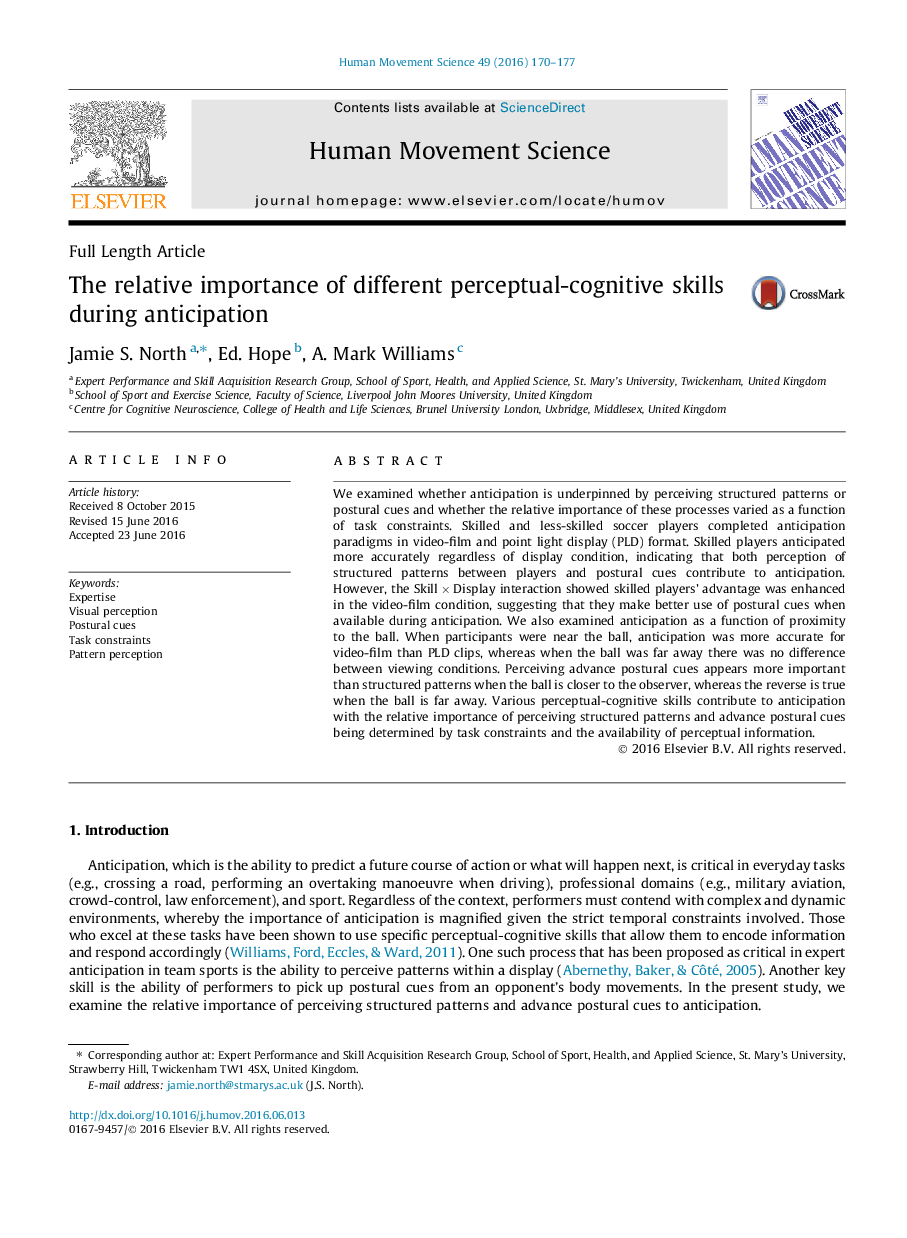| Article ID | Journal | Published Year | Pages | File Type |
|---|---|---|---|---|
| 7291260 | Human Movement Science | 2016 | 8 Pages |
Abstract
We examined whether anticipation is underpinned by perceiving structured patterns or postural cues and whether the relative importance of these processes varied as a function of task constraints. Skilled and less-skilled soccer players completed anticipation paradigms in video-film and point light display (PLD) format. Skilled players anticipated more accurately regardless of display condition, indicating that both perception of structured patterns between players and postural cues contribute to anticipation. However, the Skill Ã Display interaction showed skilled players' advantage was enhanced in the video-film condition, suggesting that they make better use of postural cues when available during anticipation. We also examined anticipation as a function of proximity to the ball. When participants were near the ball, anticipation was more accurate for video-film than PLD clips, whereas when the ball was far away there was no difference between viewing conditions. Perceiving advance postural cues appears more important than structured patterns when the ball is closer to the observer, whereas the reverse is true when the ball is far away. Various perceptual-cognitive skills contribute to anticipation with the relative importance of perceiving structured patterns and advance postural cues being determined by task constraints and the availability of perceptual information.
Related Topics
Life Sciences
Neuroscience
Cognitive Neuroscience
Authors
Jamie S. North, Ed. Hope, A. Mark Williams,
